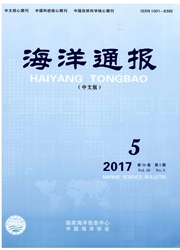

 中文摘要:
中文摘要:
水深测量对于水利、航运、近海工程等具有重要作用。在总结国内外水体遥感测深主要方法和研究进展的基础上,对水深遥感反演中各类模型存在的问题进行了讨论。结果表明:理论解译模型模拟了光在水体内的辐射传输过程,水深反演精度较高,但模型计算需要大量的水体光学参数且计算过程烦琐:半理论半经验模型对理论解译模型进行了简化,所需水体光学参数少且具有较好的精度而被广为应用;统计相关模型通过直接建立遥感图像光谱值和实测水深之间的相关关系而获得水深数据,且计算相对简单,但由于实测水深值与遥感图像光谱值的事实相关性无法保证,使采用该类模型反演的水深结果有时并不理想。提高水深遥感反演精度,必须进一步加强遥感器研究,充分考虑水体中的溶解、悬浮物质等信息干扰,科学构建水深模型和大气校正模型。
 英文摘要:
英文摘要:
Water depth mapping plays an important role in water conservancy, shipping, offshore project and so on. This paper simply summarized main methodologies and progress of water depth mapping from remote sensing data, and questions existed in each methodology were also discussed. Results show that: radiance transfer model could simulate the light transfer process in the water successfully and the precision of the water depth retrieval is higher, but the model need numberous water body optics parameters and the computation was complicated; harf theory and harf empirical model simplified the radiance transfer model and it just need a few water body optics parameters but with higher precision, so it was widely used; statistical correlation model established the relationship between the remote sensing radiance value and the actual water depth directly and the model computation was simpler than the radiance transfer model, but the factual relationship could not be guaranteed, which made the results of water depth mapping from the model sometimes not ideal. In order to increase the water depth retrieval precision, we must consider the influences of dissolved and suspended materials in the water and we should do more researches on remote sensors, remote sensed bathymetry models and the atmospheric correction models and so on.
 同期刊论文项目
同期刊论文项目
 同项目期刊论文
同项目期刊论文
 期刊信息
期刊信息
